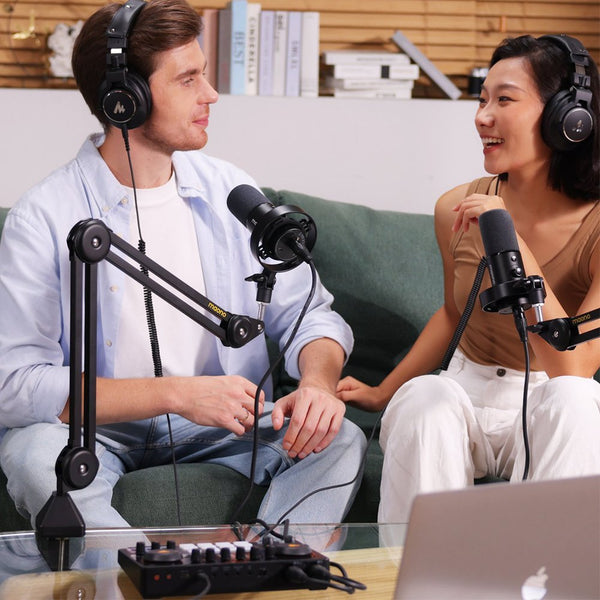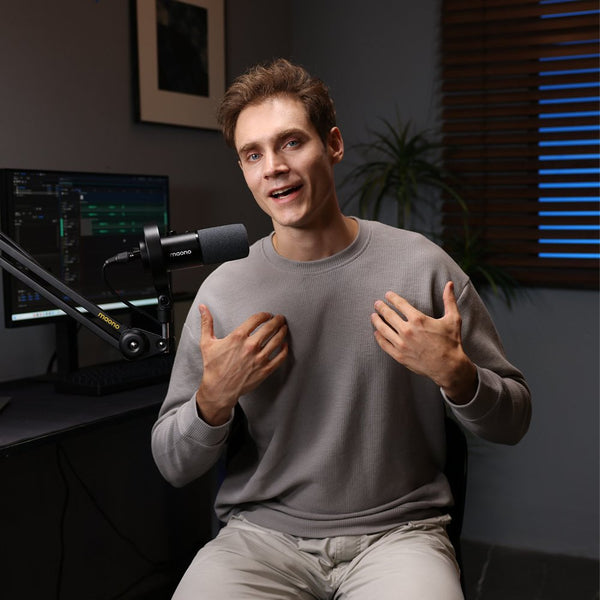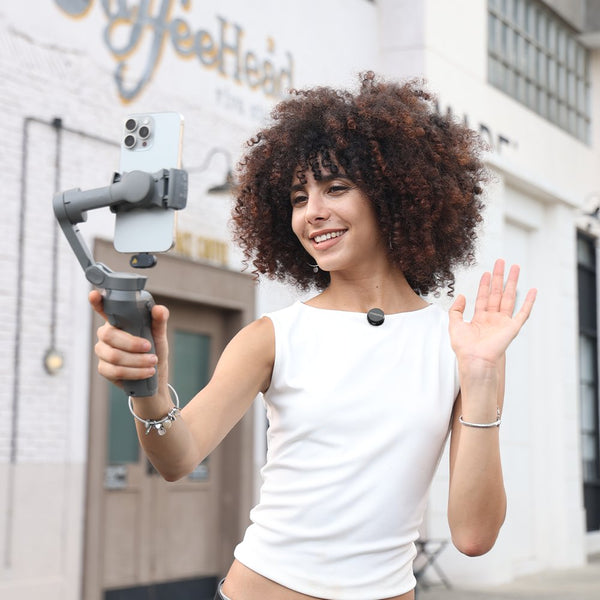In today’s content-rich world, podcasting has emerged as a powerful medium for personal storytelling. Whether you’re opening up about life experiences, sharing moments of growth, or connecting with others through vulnerability, a personal storytelling podcast can be a fulfilling creative outlet. But where do you begin? From choosing the right podcast mics to structuring emotional stories and building a loyal audience, this guide will walk you through every essential step—so you can launch your podcast with clarity and confidence.
How to Start a Personal Storytelling Podcast
Starting a personal podcast begins with intent. Ask yourself: What stories am I called to tell? and Why do I want to share them? Your purpose will shape everything from your tone to your episode structure.
Steps to start:
-
Choose a theme – Narrow your focus (e.g., healing from grief, parenting reflections, cultural identity).
-
Pick a name – Make it personal, memorable, and reflective of your content.
-
Select a format – Solo, co-hosted, interview-based, or a mix.
-
Plan your first few episodes – Start with stories that are meaningful and engaging but not overly complex to tell.
Choosing the Right Microphone for Podcasting
Audio quality is critical. Even the most compelling stories can lose impact if the listener is distracted by poor sound. Investing in the best mic for podcasting will immediately elevate your production quality.
Here are two excellent options—especially for beginner to intermediate podcasters—when shopping for the best podcast mic.
Maono PD400X

-
Connection
USB and XLR (great for future-proofing as your setup grows).
-
Sound Quality
Broadcast-level audio with rich tones—ideal for storytelling.
-
Built-In Features
Touch panel for gain, volume, mute, and headphone monitoring.
-
Best For
Podcasters who want professional sound and the flexibility to scale.
This model ranks high among creators looking for the best podcast mics that are easy to use yet professional-grade.
Maono PD300X

-
Connection
USB and XLR.
-
Design
Sleek, durable, and compact—perfect for home studios or portable setups.
-
Sound
Clear and warm, especially great for voice-focused recordings.
-
Best For
Budget-conscious podcasters looking for simplicity without sacrificing quality.
Both the PD400X and PD300X are standout options if you're searching for the best mic for podcasting or a reliable mic for podcast recordings from home.
Building Confidence to Share Vulnerable Stories
Sharing personal experiences—especially emotional or difficult ones—takes courage. Start small. Share a story you’re comfortable with and gradually build up. Practicing aloud and journaling your story before recording can ease nerves. Remember: vulnerability is powerful because it’s human, not because it’s perfect.
Structuring Personal Experiences into Podcast Episodes
Good storytelling has a clear flow:
-
Hook – Start with a question, vivid scene, or surprising statement.
-
Build-up – Give context and emotional weight.
-
Climax – Share the pivotal moment.
-
Reflection – What did you learn? How did it change you?
-
Close – Tie it back to your listener’s life. Ask a reflective question or offer encouragement.
Recording Quality Audio from Home
You don’t need a fancy studio. With a few tweaks, your home can be podcast-ready:
-
Choose a quiet room away from windows and appliances.
-
Use soft surfaces like rugs, curtains, or blankets to reduce echo.
-
Position your mic for podcast correctly – typically 6–8 inches from your mouth.
-
Record when it’s quiet – Early morning or late at night can help avoid background noise.
Microphone Techniques for Authentic Storytelling
-
Consistent distance from the mic maintains sound quality.
-
Use a pop filter to avoid plosives (hard "P" and "B" sounds).
-
Speak with emotion – Don't just read; tell your story like you're talking to a friend.
-
Pause intentionally – It allows listeners to absorb emotional beats.
Overcoming Fear of Judgment When Sharing Personal Experiences
This fear is natural. Here are a few mindset shifts:
-
Focus on helping or connecting, not impressing.
-
Your story may be exactly what someone else needs to hear.
-
Not everyone will resonate—and that’s okay.
-
You control the narrative and how much you share.
Balancing Honesty and Privacy in Storytelling
Honesty builds trust—but boundaries build safety. Use aliases or general descriptions when needed. You can be real without revealing everything. Ask: Is this my story to tell? and Am I ready for this to be public? Editing allows you to revise or remove anything that doesn’t feel right.
How to Grow an Audience Through Authentic Storytelling
-
Consistency matters – Post on a regular schedule.
-
Share on social media with clips, quotes, or behind-the-scenes moments.
-
Ask for listener engagement – questions, feedback, or voice notes.
-
Collaborate with others in your niche or related spaces.
-
Always lead with value – what’s in it for the listener?
FAQ Section:
1. How do I structure a podcast episode around a personal story?
Follow a storytelling arc: introduction, context, climax, and resolution, ending with a takeaway.
2. What makes a personal story engaging for listeners?
Honesty, relatability, emotional depth, and a clear narrative make stories resonate.
3. How can I share vulnerable experiences without oversharing?
Set personal boundaries. Focus on the story’s value, not every detail.
4. How do I turn everyday life events into compelling podcast content?
Find universal themes—growth, failure, humor, transformation—and highlight them.
5. How do I handle negative feedback or judgment from sharing personal stories?
Take feedback constructively, but don’t let fear silence your voice. Your audience isn’t everyone.
6. What are the best tips for sounding natural and authentic on a podcast?
Practice, speak conversationally, and imagine you’re talking to one listener, not many.
7. How can I protect the privacy of others when sharing real-life events?
Use initials or change names/locations. Get consent if the person is central to the story.
8. Should I write a script or speak freely when telling my stories?
A mix is best. Use an outline to stay on track but allow room for natural flow.
9. How long should personal story podcast episodes be?
15–30 minutes is ideal for most listeners, but go longer if the story justifies it.
10. Can I mix personal stories with interviews or commentary?
Absolutely. It adds variety and broadens appeal.
11. What kind of microphone is best for podcasting personal stories?
Dynamic microphones like the Maono PD400X are great for voice-focused recordings.
12. What’s the difference between a USB mic and an XLR mic?
USB mics plug directly into a computer. XLR requires an interface but offers better quality and flexibility.
13. Do I need a pop filter or soundproof room for good audio quality?
A pop filter helps with clarity. You don’t need a soundproof room, but minimize hard surfaces and echo.
14. How do I avoid background noise when recording at home?
Use a dynamic mic, record in a quiet room, and turn off fans/appliances.
15. How far should I be from the microphone while speaking?
Around 6–8 inches. Too close causes distortion; too far reduces clarity.
16. What are the best affordable podcast microphones for beginners?
The Maono PD300X is a great budget-friendly option with clear audio.
17. How do I test and set proper mic levels?
Speak at normal volume and aim for levels peaking around -6 dB. Avoid clipping.
18. Should I use headphones while recording my podcast?
Yes, they help monitor audio and catch issues like mic pops or noise.
19. How do I fix poor sound quality in my recordings?
Use EQ, compression, and noise reduction in editing software. Better to prevent issues than fix them.
20. What software pairs well with my mic setup for editing?
Audacity (free), Adobe Audition, GarageBand, or Descript are all great choices.
Conclusion
Starting a personal storytelling podcast is both a technical and emotional journey. You’re not just pressing “record”—you’re opening your life to others in a meaningful, creative way. With the right tools, like the Maono PD400X or PD300X microphones, and a mindset rooted in honesty and growth, you can build something powerful.
Whether you're searching for the best mic for podcasting, comparing the best podcast mics, or just beginning with a reliable mic for podcast, your voice matters—and someone out there needs to hear it. So start now. Share your story. The mic is waiting.



